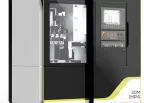3D printing, also known as additive manufacturing, has revolutionized the way products are designed and manufactured. This technology has enabled the creation of complex and customized objects with unprecedented speed and precision. 3D printing processes can be classified into several categories based on their underlying principles and techniques. In this article, we will explore the different classifications of 3D printing processes and discuss their unique characteristics and applications.
Fused Deposition Modeling (FDM)
Fused Deposition Modeling (FDM) is one of the most widely used 3D printing processes. In FDM, thermoplastic filaments are heated and extruded through a nozzle, layer by layer, to create the desired object. This process relies on the precise control of the extrusion temperature and deposition speed to ensure the structural integrity of the printed parts. FDM is known for its versatility, cost-effectiveness, and ability to produce durable prototypes and functional components. It is commonly used in various industries, including aerospace, automotive, and consumer goods.
Stereolithography (SLA)
Stereolithography (SLA) is a 3D printing process that utilizes ultraviolet (UV) light to cure liquid photopolymer resins layer by layer, creating solid objects. SLA printers employ a laser or projector to selectively solidify the resin in accordance with the 3D model’s geometry. SLA is recognized for its ability to produce high-resolution and intricately detailed parts, making it suitable for applications such as jewelry, dental devices, and artistic prototypes. Additionally, SLA offers a wide range of resin materials with varying mechanical properties, catering to diverse industrial needs.
Selective Laser Sintering (SLS)
Selective Laser Sintering (SLS) is a 3D printing technique that employs a high-powered laser to sinter powdered materials, such as plastics, metals, or ceramics, into solid layers. This process does not require support structures, as the unsintered powder acts as a self-supporting material during the printing process. SLS is renowned for its ability to produce functional, high-strength parts with complex geometries, making it suitable for aerospace, medical, and industrial tooling applications. The broad range of materials compatible with SLS further expands its utility in various engineering and manufacturing fields.
Digital Light Processing (DLP)
Digital Light Processing (DLP) is a 3D printing method akin to SLA, utilizing a digital light projector to cure photosensitive polymers layer by layer. DLP printers employ a light source, such as a high-resolution projector, to solidify the entire layer of resin simultaneously, leading to faster printing speeds compared to traditional SLA. This process offers excellent surface finish and accuracy, making it ideal for producing intricate architectural models, custom prosthetics, and investment casting patterns.
Electron Beam Melting (EBM)
Electron Beam Melting (EBM) is a 3D printing process commonly used with metal powders to produce fully dense, high-quality metal parts. EBM technology utilizes an electron beam to melt and fuse metal powder particles into a solid component, layer by layer, within a high-vacuum environment. This method enables the production of intricate, lightweight structures with superior mechanical properties, making it suitable for aerospace, medical implant, and automotive applications. EBM’s ability to work with titanium, stainless steel, and other metals positions it as a pivotal technology for additive manufacturing in the metal industry.
Binder Jetting
Binder Jetting is a 3D printing process that involves selectively depositing a binding agent onto a powdered material bed, layer by layer, to create solid objects. Once a layer is completed, the binder is applied, and additional powder is spread over the build area. This cycle is repeated until the entire object is formed. Binder Jetting is valued for its ability to produce large parts quickly and economically, making it well-suited for the production of sand molds, ceramic components, and metal prototypes. The process also offers design freedom, material diversity, and environmentally friendly aspects due to its minimal waste generation.
Material Jetting
Material Jetting is a 3D printing technique that operates similarly to traditional inkjet printing, where droplets of liquid photopolymer are deposited onto a build platform and immediately cured with UV light. This process enables the formation of intricate, multicolor, and multi-material parts with high resolution and fine details. Material Jetting excels in producing high-definition prototypes, dental models, and artistic designs, where aesthetic appeal and exceptional surface quality are paramount. Moreover, the ability to incorporate multiple materials within a single part broadens its applicability across various industries, including consumer products and medical devices.
In conclusion, 3D printing processes encompass a diverse array of techniques, each offering distinct advantages and applications. From FDM’s versatility and affordability to SLA’s high resolution and intricate detail capabilities, the classification of 3D printing processes underscores the expansive potential of additive manufacturing across industries. As technology continues to evolve, these classifications will likely expand, driving innovation and opening new frontiers for the production of complex, customized, and functional objects.
.webp)
